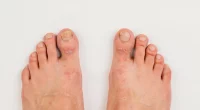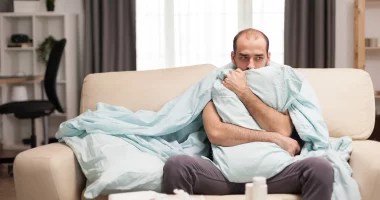The chikungunya spreads to humans primarily by the bite of an infected mosquito. It leads to symptoms like joint pain and fever. While it is uncommonly deadly, the signs can be very serious and may last for a long time, leading to significant discomfort and difficulties in daily activities.
Previously thought to only affect tropical regions, chikungunya cases have been reported in over 1/4th of the countries worldwide.
Causes
Chikungunya is caused by the chikungunya virus, which is spread to humans mainly by the bite of an infected female Aedes mosquito. These mosquitoes are most active during the day, especially early in the morning and late in the afternoon. The virus is transmitted when a mosquito bites an individual already infected with chikungunya, acquiring the virus and then passing it on to others through subsequent bites. The main mosquito species responsible for transmission include Aedes albopictus and Aedes aegypti, which are also known to spread other viruses like Zika and dengue.
In addition to mosquito bites, chikungunya virus transmission can happen through rare means like exposure to an infected person’s blood. This is less common but can happen through blood transfusions or other situations where blood from an infected individual is involved. However, the main and most significant mode of transmission remains mosquito bites, emphasizing the importance of mosquito control and personal protection to prevent the spread of the virus.
Symptoms
The virus of Chikungunya typically causes a fever that remains for several days and pain in the joints that can persist for weeks or even months. The signs of chikungunya closely resemble those of other illnesses like dengue. They usually happen just some days after being bitten by an infected mosquito.
The most common signs of chikungunya include a high fever, which can reach up to 104 °F, headache, rash, severe joint pain, muscle pain, and inflammation over the joints. In some cases, individuals may also experience a maculopapular rash, which resembles a heat rash or measles, as well as conjunctivitis, a sick feeling of stomach and vomiting.
Diagnosis
Diagnosing chikungunya requires a blood test, as its symptoms can be difficult to distinguish from those of other illnesses. It is crucial to differentiate chikungunya from dengue fever promptly because dengue fever has a higher mortality rate—up to 50 percent if left untreated—compared to chikungunya, which has a mortality rate of about 0.1 percent.
If someone with symptoms of chikungunya has recently traveled to an area where these diseases are prevalent, they should see a healthcare provider as early as possible for an accurate diagnosis and appropriate care.
Treatment
Although the chikungunya virus is rarely deadly, its symptoms can be serious. Many individuals get well from the fever in less than a week, but joint pain can persist for several months. Even a year after infection, about 20 percent of individuals may continue to experience reoccurring joint pain.
Currently, there are no particular antiviral drugs for treating chikungunya. Treatment primarily focuses on alleviating symptoms. Healthcare providers typically suggest rest and drinking lots of fluids. Over-the-counter medications can help manage joint pain and fever. Common options include ibuprofen, naproxen, and acetaminophen. For persistent aches, physiotherapy may provide additional relief.
Chikungunya Vaccine
At present, there is no antiviral treatment or vaccine available for chikungunya. The focus of medication is on relieving symptoms instead of addressing the underlying cause of the disease. However, the National Institutes of Health are capitalizing on a phase 2 clinical trial for a vaccine. This experimental vaccine uses virus-like particles instead of live or debilitated viruses.
Virus-like particles-based vaccines aim to generate immune responses resemble to those achieved through natural infection, without the risk of actual infection since VLPs cannot duplicate. This method of vaccine development avoids the need for high-grade biosafety facilities, making it a safer and more accessible approach to producing vaccines.
Complications
Chikungunya can lead to various complications, although these are relatively rare. Some of the potential complications include:
- Uveitis: Uvea inflammation, the middle layer of the eye, which lies in the middle of the internal retina and the external fibrous layer consisting of the cornea and sclera.
- Retinitis: Retina inflammation, the light-sensitive layer at the behind of the eye.
- Myocarditis: Heart muscle inflammation, which can affect the heart’s ability to pump blood effectively.
- Hepatitis: Liver inflammation, which can impair liver function.
- Nephritis: Kidney inflammation, potentially affecting kidney function.
- Hemorrhage: Inner Bleeding, which can occur in various parts of the body.
- Meningoencephalitis: Swelling of both the membranes covering the brain (meninges) and the brain tissue itself.
- Myelitis: Spinal cord inflammation, which can disrupt nerve signals.
- Guillain-Barré Syndrome: An uncommon condition affecting the peripheral nervous system, leading to muscle weakness and sometimes paralysis.
- Cranial Nerve Palsies: Cranial nerve function loss, which can impact facial movement and sensation.
These complications highlight the importance of early diagnosis and management to address severe or prolonged symptoms.
Prevention
To prevent chikungunya, it is important to decrease mosquito bites, particularly in areas where the virus is common. This can be achieved by using insect repellents containing DEET, picaridin, or oil of lemon eucalyptus on exposed skin. Wearing long-sleeved shirts and long pants can also assist decrease skin exposure. Additionally, using mosquito nets while sleeping and ensuring that living areas are equipped with window screens or air conditioning can further decrease the chance of mosquito bites.
Ruling out mosquito breeding places is another key preventive measure. Mosquitoes that spread chikungunya breed in water stagnancy, so regularly cleaning and emptying containers that gather rainwater, like birdbaths, buckets, and flowerpots, is important. Properly covering water storage containers and disposing of unused items that can collect water will also help control mosquito populations. By taking these steps, individuals can significantly decrease their chance of contracting chikungunya.
Summary
Chikungunya is caused by a virus transmitted by the bite of infected Aedes mosquitoes, mainly Aedes aegypti and Aedes albopictus. Symptoms include joint pain, fever, and sometimes a rash, with joint pain potentially lasting for months. Diagnosis needs a blood test to distinguish it from other diseases like dengue fever. Treatment focuses on relieving symptoms with rest, fluids, and over-the-counter medications; physiotherapy may help with persistent pain. Prevention involves avoiding mosquito bites with repellents and protective clothing and eliminating mosquito breeding sites. Current research is exploring a vaccine using virus-like particles.








